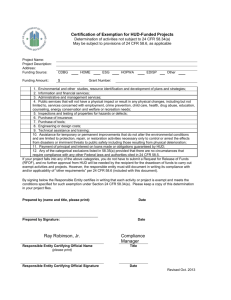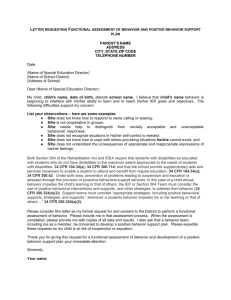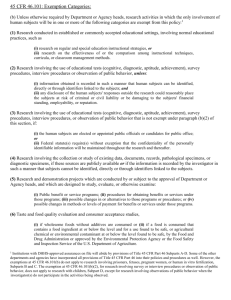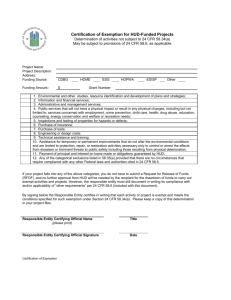Chapter 17 - Thermochemistry
advertisement
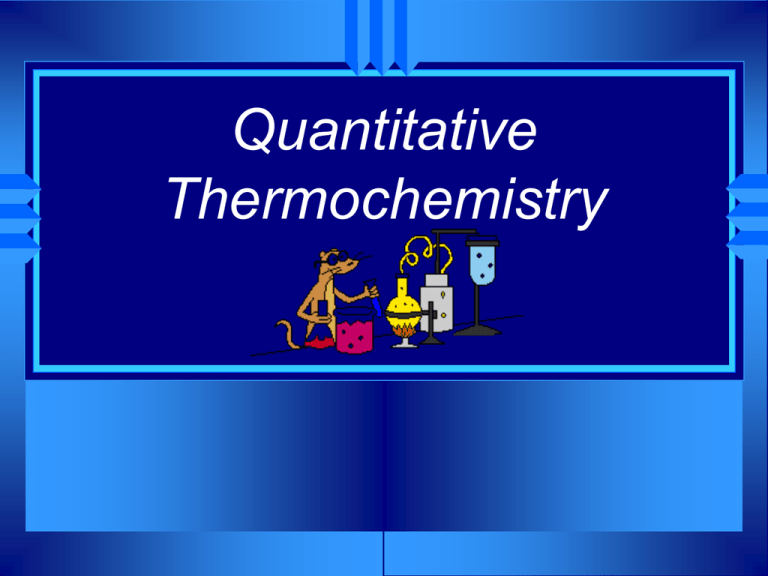
Quantitative Thermochemistry Chemistry Joke Q: What weapon can you make from the elements potassium, nickel, and iron? A: KNiFe! Chemical Heat Changes Stoichiometry can be used with thermochemical equations. CH4 + 2O2 CO2 + 2H2O + 802.2 kJ • 1 mole of CH4 releases 802.2 kJ of energy. • When you make 802.2 kJ you also make 2 moles of water. 3 Thermochemical Stoichiometry CH4 + 2 O2 CO2 + 2 H2O + 802.2 kJ If 10.3 grams of CH4 are burned, how much heat will be produced? Use 802.2 kJ in a stoichiometric ratio! 10. 3 g CH4 1 mol CH4 16.05 g CH4 - 802.2 kJ 1 mol CH4 = - 515 kJ Thermochemical Stoichiometry CH4 + 2 O2 CO2 + 2 H2O + 802.2 kJ If you want to produce 500. kJ of heat, how many grams of CH4 need to be burned? 500. kJ 1 mol CH4 - 802.2 kJ 16.05 g CH4 1 mol CH4 = 10.0 g Physical Heat Changes Individual substances respond differently to heat changes. Some substances, like water, can absorb a lot of heat before their temperature rises. Other substances, like metals, only need a little bit of heat to cause a temperature change. Physical Heat Change The amount of heat it takes to raise the temperature of 1g of a substance 1oC is called the specific heat capacity of that substance. “Specific” heat capacity is independent of mass. Heat capacity is dependent on the mass of the object. Specific Heat Capacity Symbol is “C” Units are J/g ·ºC or cal/g ·ºC When considering physical heat changes, “q” is used to indicate heat. q C= m x T Specific = heat Heat mass x temp change T = Tfinal - Tinitial Specific Heat Problem When 435 J of heat are added to 3.4 g of olive oil at 21oC, the temperature increases to 85oC. What is the specific heat of olive oil? C = q / (m x T) T = 85oC - 21oC = 64ºC 435 J / (3.4 g x 64ºC) = 1.999 2.0 J/(g ·ºC) Specific Heat Problem It takes 487.5 J to heat 25 grams of copper from 25 °C to 75 °C. What is the specific heat of copper? 0.39 J/g·°C Heat Problems The equation for specific heat can be rearranged to solve for heat. q = m C T Note that heat, q, and specific heat, C, are two different things. q can be positive or negative depending on the T. (Remember, negative heat indicates an exothermic process, and positive heat indicates an endothermic process.) Heat Problem How much heat is required to raise the temperature of 250 g of mercury 52oC? The specific heat of Hg is 0.14 J/(g ·oC). q = m x C x T 250 g x 0.14 J /(g ·ºC) x 52ºC =1820 1800 J or 1.8 kJ Heat Problem How much energy must be absorbed by 20.0 g of water to increase its temperature from 283.0 ºC to 303.0 ºC? The specific heat of water is 4.184 J/g ·oC. 1670 J Phase Changes To find the heat required to melt a substance, q = m ∆Hfus. To find the heat required to vaporize a substance, q = m ∆Hvap. The mass units have to match. Phase Changes Water: ∆Hfus = 333 J/g ∆HVap = 2250 J/g How much heat is required to change 25 g of ice at 0 ºC to water at 0 ºC? q = m ∆Hfus 25 g x 333 J/g 8300 J Phase Changes Water: ∆Hfus = 333 J/g How ∆HVap = 2250 J/g much heat in kJ is required to vaporize 2.0 moles of water? 81 kJ Using a Heating Curve How much energy would it take to change 25 g of water at 30 ºC to steam at 110 ºC? Slanted line: q = m C ∆T Flat lines: q = m ∆H Using a Heating Curve Step1: Draw a graph / label low and high temp from problem Step 2: Determine any phase changes Step 3: Draw slanted lines to and from phase changes and flat lines for phase changes Step 4: Write one equation for each line segment. Use the correct C, ∆T, or ∆H. Step 5: Add the energies together Water: ∆Hfus = 333 J/g Cwater = 4.184 J/g ºC ∆HVap = 2250 J/g Cice = 2.15 J/g ºC Csteam = 2.05 J/g ºC 25 g of water at 30 ºC to steam at 110 ºC (Answer: 64,085 J) Chemistry Joke Oh no! All the good chemistry jokes argon! I don’t “zinc” so!




